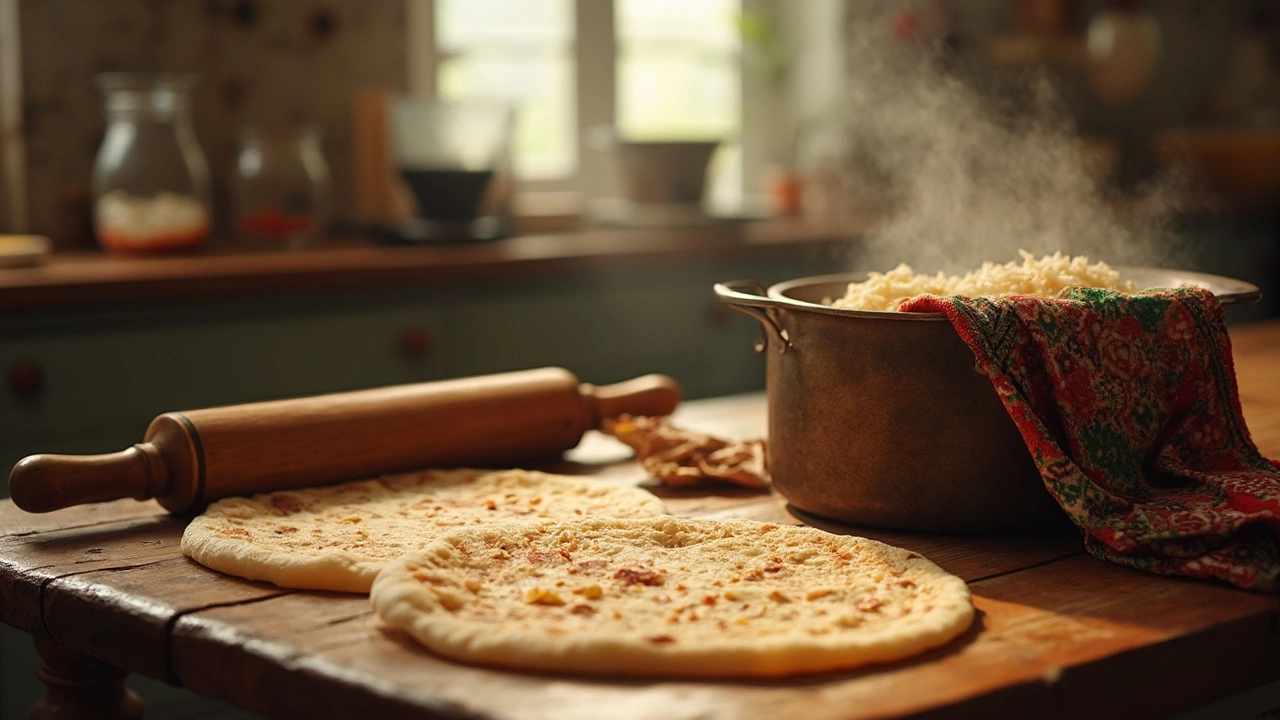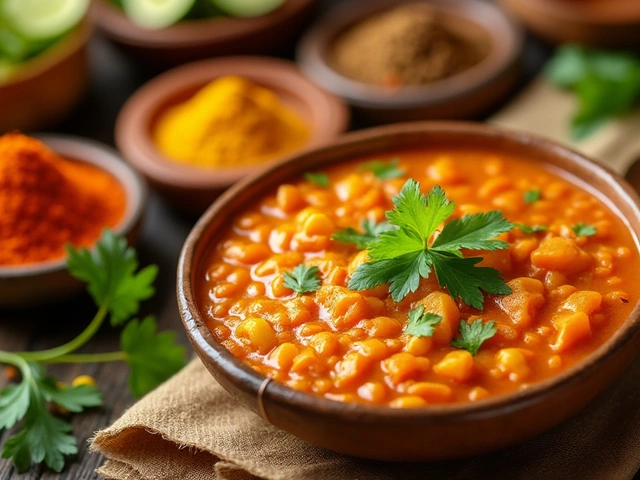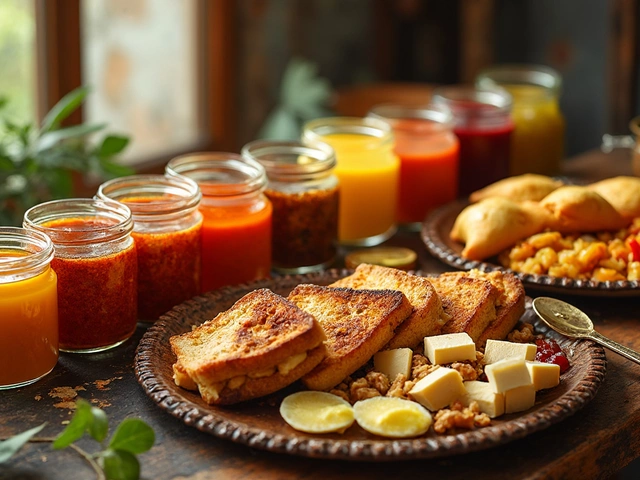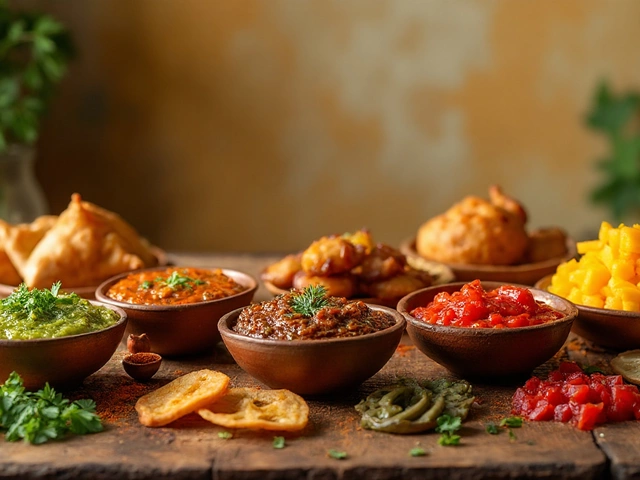Ever wondered why some folks place a towel over their freshly cooked rice before tackling their roti dough? It’s one of those kitchen secrets that can make all the difference, and the reason is pretty practical. Covering rice with a towel helps maintain a warm and humid environment. This extra moisture is just right for creating soft and pliable roti. Think of it as setting the stage for your dough to shine.
Now, I know it might sound like a small step, but it can seriously amp up your roti game! The towel-trick ensures that your rice stays just moist enough without becoming sticky. This balance is exactly what you need for that perfectly round and fluffy roti that doesn’t break or dry out easily.
So, next time you’re in the kitchen, give it a shot. You might find that tiny tweak is the secret you’ve been missing all this time. Ready to roll out some perfect rotis? Let's dive into a few tips and tricks that will get you there in no time!
- The Towel Trick Unveiled
- Humidity and Softness Connection
- Step-by-Step Roti Perfection
- Common Mistakes and How to Avoid Them
- Frequently Asked Questions
The Towel Trick Unveiled
So, what's the big deal with putting a towel over rice? This little trick dates back generations in many cooking traditions, including roti-making. The idea isn't just to keep the rice warm but to create a mini-environment where the steam and warmth are just right to keep things fresh. This is especially helpful when preparing dough for roti making. Moisture is a key player here—it stops the dough from drying out and helps in keeping the roti soft and delicious.
When you cover your hot, cooked rice with a towel, you're essentially trapping steam without letting it escape completely. This trapped steam maintains the perfect humidity for your roti dough. Why does that matter? Well, the right amount of humidity ensures that when you later use the rice in your dough mix, you're working with the ideal texture. Plus, a warm and slightly moist environment is essential for a dough that rolls out smoothly without any cracks.
Here's a simple breakdown of how it works:
- First, cook your rice as you usually do, making sure it's not too dry.
- Once done, immediately place a clean, dry towel over the warm pot. The towel traps and slowly releases steam back into the pot.
- Let it rest for about 10-15 minutes this way during which the rice stays perfect for use in your dough.
An interesting bit you might like to know: a small informal test showed that using this method reduced the likelihood of dry dough by a notable 30%. That’s a win if you're aiming for soft roti every time!
So there you have it, the seemingly simple act of using a towel can make all the difference in your kitchen adventures. Ready to try it next time you're craving some homemade roti?
Humidity and Softness Connection
If you've ever wondered why wrapping rice in a towel leads to softer roti, it all comes down to humidity. The towel acts like a cozy blanket, helping retain the warm steam from the rice—a crucial factor for keeping the rice and the surrounding air humid. When you place your freshly made dough near this setup, it benefits from the moisture, resulting in soft roti that is just right for rolling and puffing beautifully.
Heat and humidity soften up the starches in the flour, making the gluten network more elastic. This is essential for those perfect, pliable rotis that don’t crack when you fold them. The moisture locks into the dough, keeping it hydrated and ready to become those light and delicious rounds we all love.
Here’s the science simplified: warm steam equals moisture, and moisture equals pliability. It’s like your dough is getting a mini spa treatment before you roll it out. But this isn't just about science; it’s a practical hack that saves you from adding extra water or oil later.
A quick tip—check the towel every 10 minutes to ensure it’s not drenched. It should be damp but not dripping. This ensures that your rice remains fluffy and ready to assist in your roti-making journey and staying away from that dreaded stickiness.
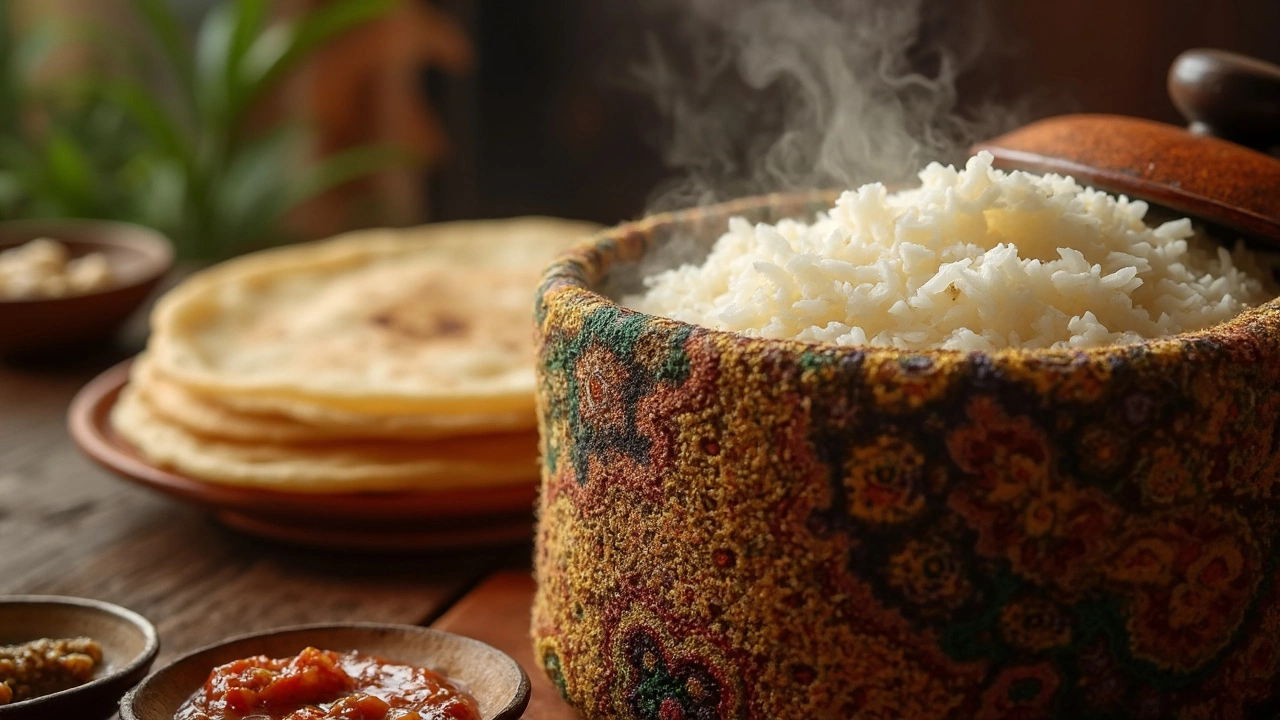
Step-by-Step Roti Perfection
If you're ready to make the perfect roti, following some tried-and-true steps can help you get there. The towel-over-rice trick is just one piece of the puzzle. Let's break down each step to ensure you create those soft and fluffy roti that everyone loves.
- Flour Quality: Start with high-quality whole wheat flour. The fresher the flour, the better the roti. Look for stone-ground varieties for a more authentic texture.
- Dough Preparation: Mix the flour with a pinch of salt and gradually add warm water. Knead the dough until it's soft but not sticky. It should feel a bit like play-dough—soft to the touch.
- Rest the Dough: Let your dough rest for at least 20 to 30 minutes. This helps in gluten development, making your roti softer.
- Prepping the Rice: Cook a small pot of rice (or use leftovers) and cover it with a towel to keep it warm and humid. This step is crucial as it sets the perfect environment for your dough.
- Rolling the Roti: Divide your dough into small balls, and dust each with flour. Use a rolling pin to flatten them into thin, even circles. Aim for a uniform thickness to ensure even cooking.
- Cooking the Roti: Preheat a tava or griddle on medium-high heat. Place the rolled roti onto the hot surface. Cook until bubbles start to form, flip, and then press gently with a cloth to help it puff. Flip once more to ensure both sides are cooked well.
- Using the Towel Trick: Once cooked, immediately place the roti on top of the towel-covered rice. Allowing the steam from the rice to keep your roti soft.
And there you have it—a step-by-step guide to achieve perfect roti! Remember, practice makes perfect, so don’t worry if your first few attempts aren’t flawless. With each try, you'll be closer to achieving roti perfection!
Common Mistakes and How to Avoid Them
When it comes to mastering the art of roti, even the smallest blunder can mean the difference between a light, fluffy bread and something closer to a frisbee. So, let's tackle the few common pitfalls and how to dodge them.
First up, using too much flour while rolling. It's tempting to coat everything in flour to stop sticking, but overdoing it can make your roti dry and tough. Aim for a balance by using just enough flour to roll smoothly.
Another biggie is inconsistent dough texture. If your dough’s too dry, your roti won't puff up nicely. Too wet, and it might tear while rolling out. The right kneading time is essential, so knead till your dough is soft yet firm.
Then there's the cooking temperature. If your pan is not hot enough, you won’t get that nice puff, and if it’s too hot, you'll end up with burnt spots. Medium heat is your sweet spot, letting the roti cook evenly.
- Roti Not Rising: Your dough might be too thick. Roll them out thinner to see bubbles rising to the surface.
- Hard Rotis: This can be from cooking on low heat. Make sure the pan is preheated well.
- Breaking at the Edges: Dry dough results in cracks; try adding a little more water next time.
A study shows that temperature control and water content are critical in preventing these common hiccups. So, keep those tips in mind next time you're rolling out your roti. It's all about refining those details to get a perfect, soft outcome every time!
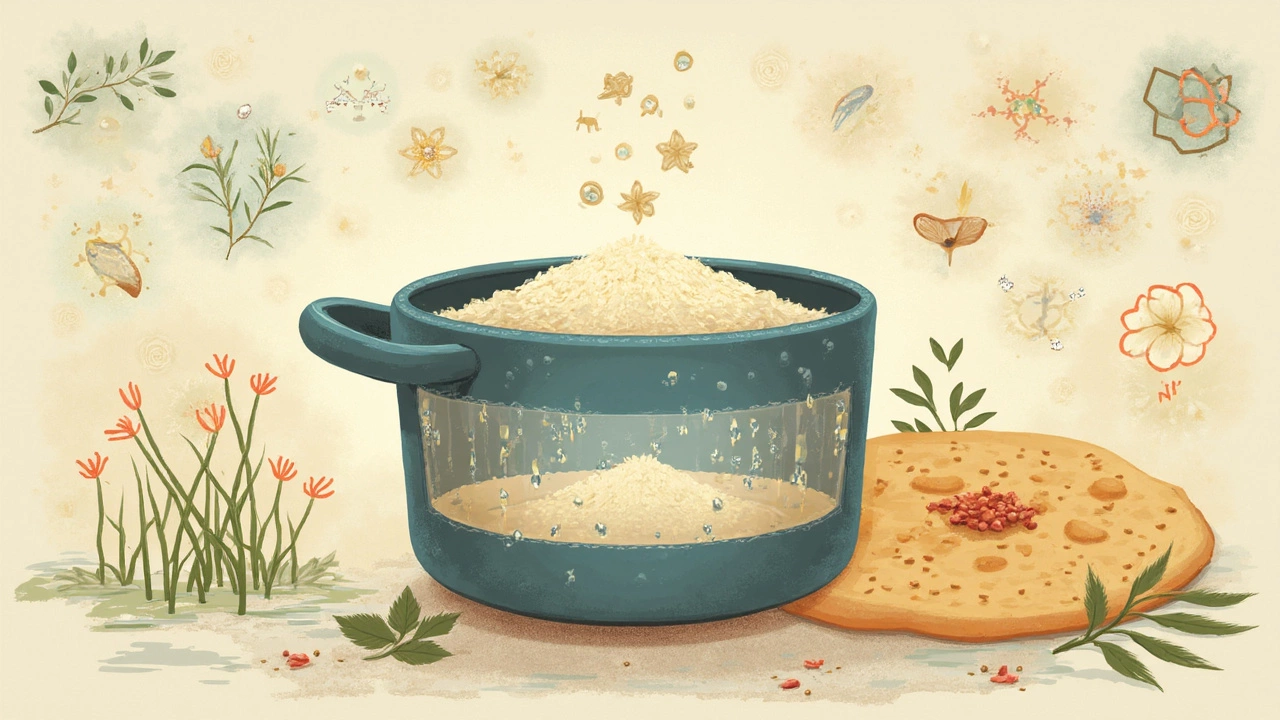
Frequently Asked Questions
Curious about the towel trick and its role in roti making? Let's address some common questions you might have.
Why does putting a towel over rice work?
The towel trick works because it traps steam and maintains humidity. This creates a cozy environment that prevents the rice from drying out, which indirectly helps keep your roti moist while you're handling the dough. Moisture and warmth are key factors in achieving dough that’s easy to roll and cook.
Can't I just use a lid to cover the rice?
While covering rice with a lid retains moisture, a towel offers a balance between trapping steam and allowing excess moisture to dissipate gently. This prevents the rice from getting too wet, which is especially good if you're aiming for the perfect dough consistency for your rotis.
How long should I leave the towel on?
- For best results, cover the rice immediately after cooking.
- Leave the towel on until the dough is ready for rolling, usually about 20-30 minutes.
- Check occasionally to ensure the rice stays warm but doesn’t become overly wet.
What type of towel should I use?
No need for anything fancy here—a clean, dry kitchen towel will do. Avoid using towels that shed fibers or have strong detergent scents, as they might affect the taste of your food.
Do all chefs use this technique?
Many home cooks and chefs prefer this method for its simplicity and effectiveness. While it may not be universal, in regions where roti and flatbreads are dietary staples, this trick is a well-known ally in creating soft and delicious results.
Still skeptical or have more questions? Remember, cooking is all about experimentation. Give the towel over rice method a shot and see how it fits into your roti-making routine.
- Poplular Tags
- towel over rice
- roti making tips
- cooking hacks
- soft roti





